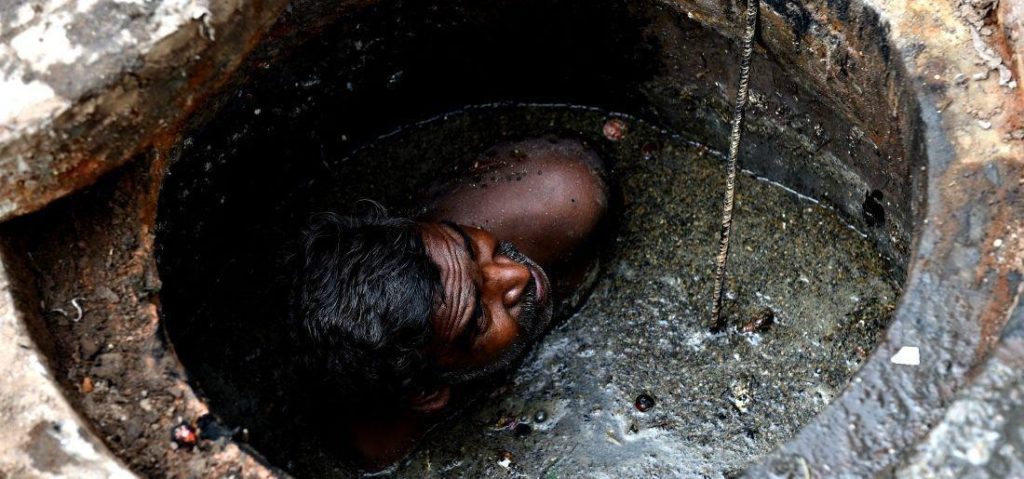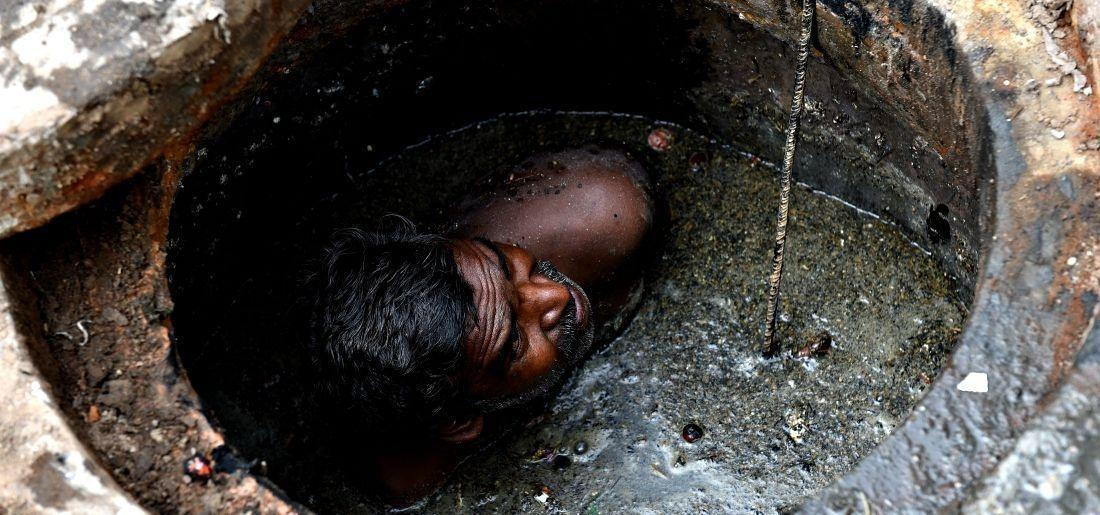
Manual scavenging refers to “the practice of manually cleaning, carrying, disposing or handling in any manner, human excreta from dry latrines and sewers.”(1) This practice was a result of the caste system prevalent in India. Historically, in India, the population was categorized in a hierarchical form of caste system where depending upon the caste people were discriminated over which occupation they can practice. The lower class was assigned the task of cleaning toilets and carrying human excreta for disposal.
Manual scavenging is banned since 1933 but it was only in 2013 that The Prohibition of Employment as Manual Scavengers (MS) and their Rehabilitation Act was passed which made it illegal to employ people for the purposes of manual scavenging in any form. It also provides for prohibition of construction of dry latrines or toilets where human excreta is to be cleaned manually (2).
Despite the law, as of July, 2019- 54,130 people were reported to be engaged in manual scavenging all over India (3). According to a Survey conducted by National Safai Karamchari Finance and Development Corporation as of August 2019, Uttar Pradesh (19712 MS), Maharashtra (7378 MS), Uttarakhand (6033 MS), Rajasthan (2590 MS) and Andhra Pradesh (1982 MS) are the top five states with highest number of Manual Scavengers. (4)

One of the agendas of Swachh Bharat Abhiyan was to get rid of this discriminatory ancient practice but the project has failed in this regard because of two reasons; presence of insanitary latrines and structurally bad septic tanks. In 2014, when Prime Minister Narendra Modi launched the Swachh Bharat Abhiyan he called for the nation’s participation in building 2 crore toilets to replace the 2.6 million dry toilets but not much has changed since (5).
The septic tanks are designed in a way that makes it difficult for machines to enter and clean them. “Septic tanks are designed badly. They have engineering defects which means that after a point, a machine cannot clean it,” said A Narayanan, director of Chennai-based Change India.(6) Also, Pit latrines without a proper water seal require the waste to be manually collected in buckets (7). Under the Swachh Bharat Abhiyan 30 million septic tanks were to be built by 2019 in the same fashion, however no reports are available as to how many septic tanks were actually built in a way that would completely replace manual scavenging. (8)
Manual scavenging is posing serious threats to human health such as causing hepatitis, leptospirosis and helicobacter, skin problems, respirator system problems and altered pulmonary function parameters (9) In study conducted by Rashtriya Garima Abhiyaan, they examined a total 140 incidents and 302 deaths from 1992 to 2018; most of them due to negligent conduct with respect to a poisonous gas and not in a single case were the contractors held liable for the deaths. Also, only 31% of the total deaths or incidents of hazardous effect to health were provided compensation the remaining 69% were not compensated at all. (10)
Manual Scavenging is legally prohibited by the 2013 legislation however this is only theoretically true because the implementation of the provisions require the government to build across rural and urban areas composting toilets, bio-toilets and leach pits, as stressed under the Swach Bharat Abhiyan scheme. This can be done by funding technologies that can cure this issue. There are reportedly about 15 innovations developed across the country to replace manual scavenging. According to reports, the Hyderabad Metropolitan Water Supply and Sewerage Board is using 70 mini jetting machines that can access narrow lanes and smaller colonies to clear the choked sewer pipes. In Thiruvananthapuram, a group of engineers has designed a spider-shaped robot that cleans manholes and sewers with precision (11). The government needs to prioritize such issues because it’s a shame that people are losing lives practicing this inhuman practice just because the government cannot install flushes in public toilets.

